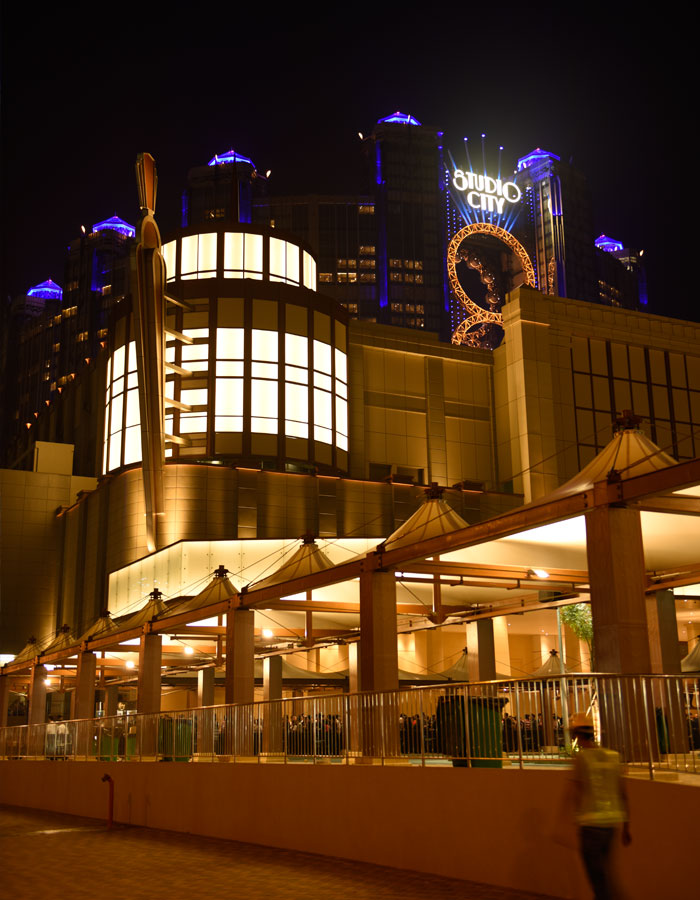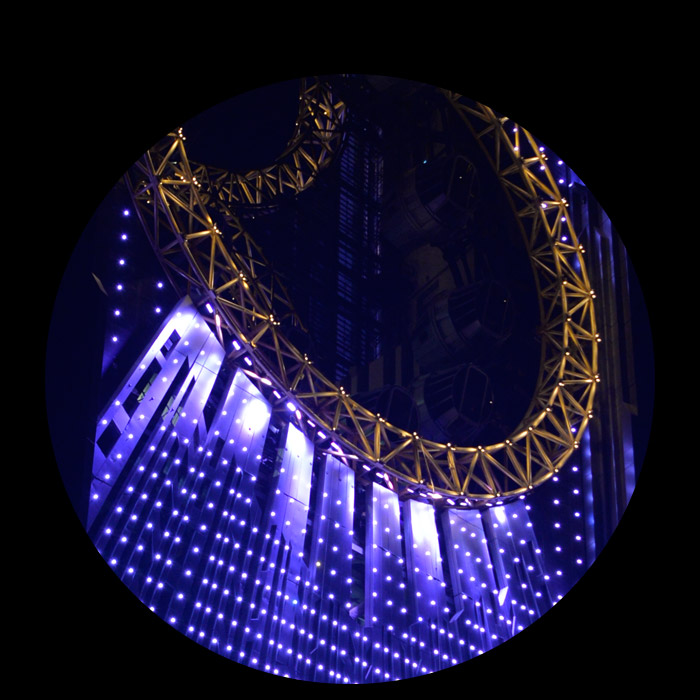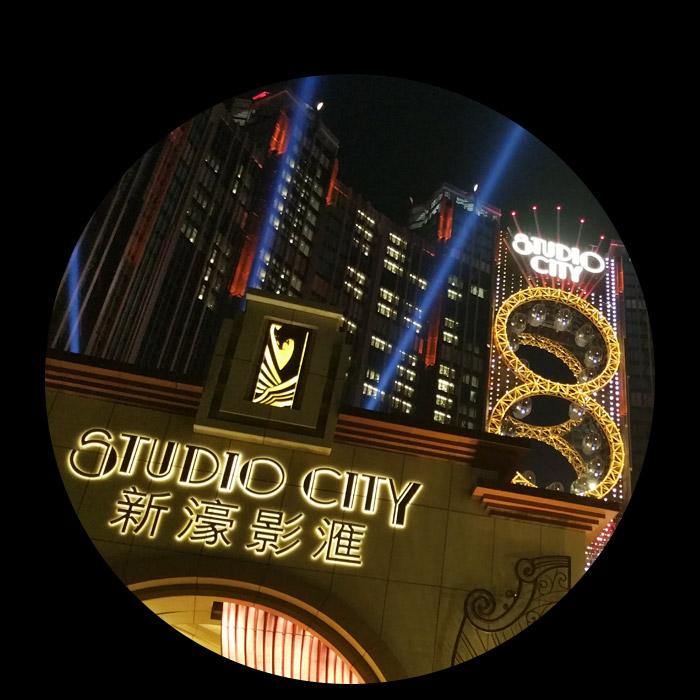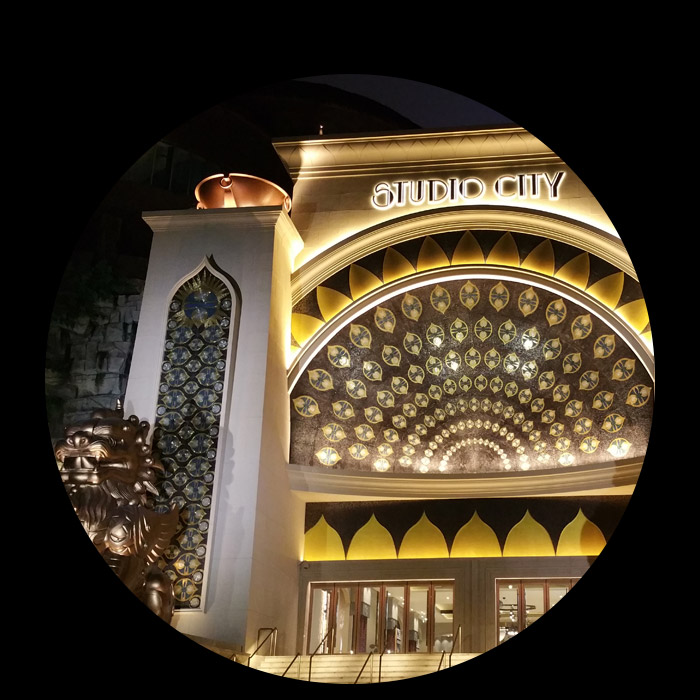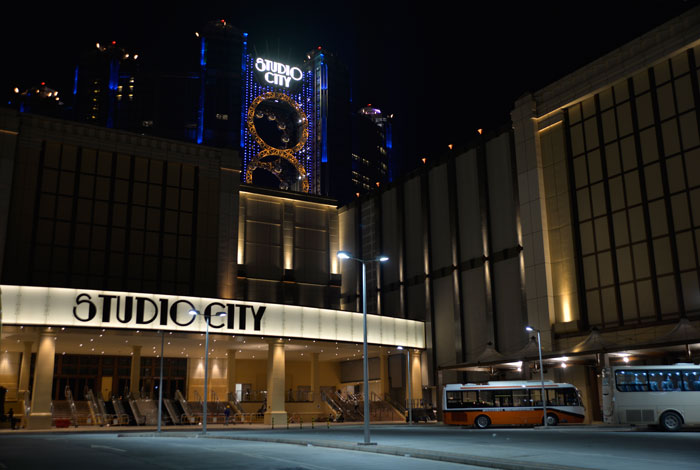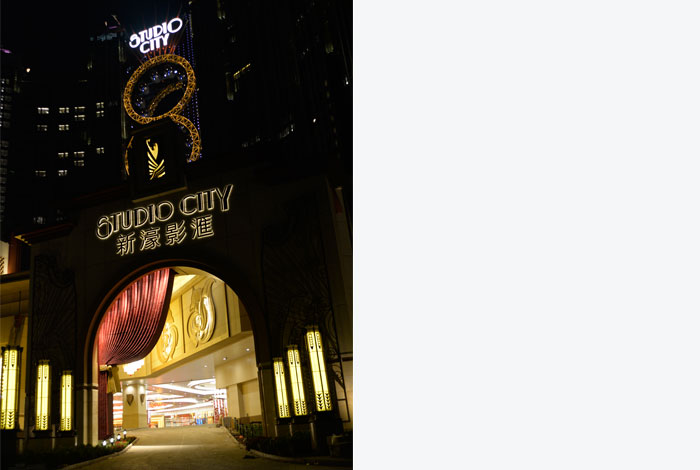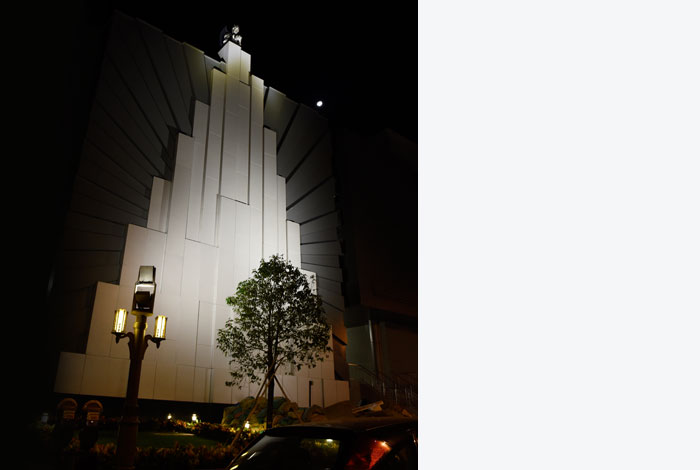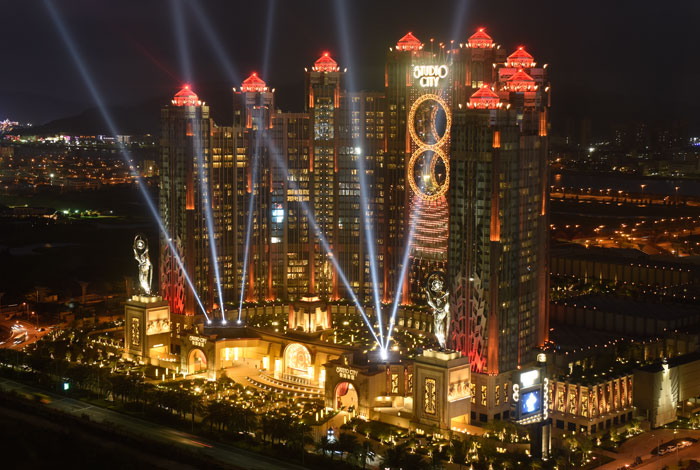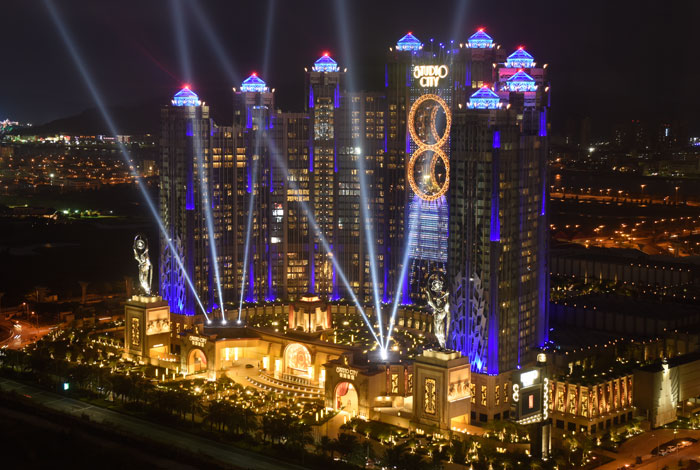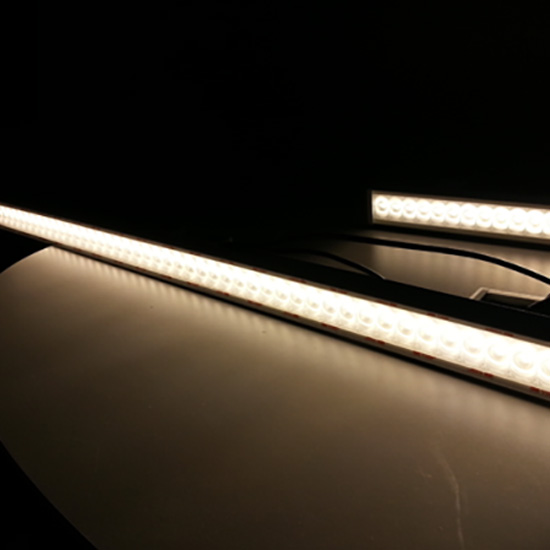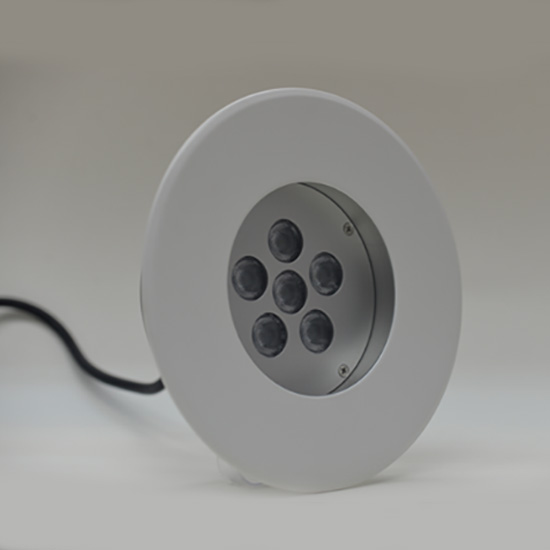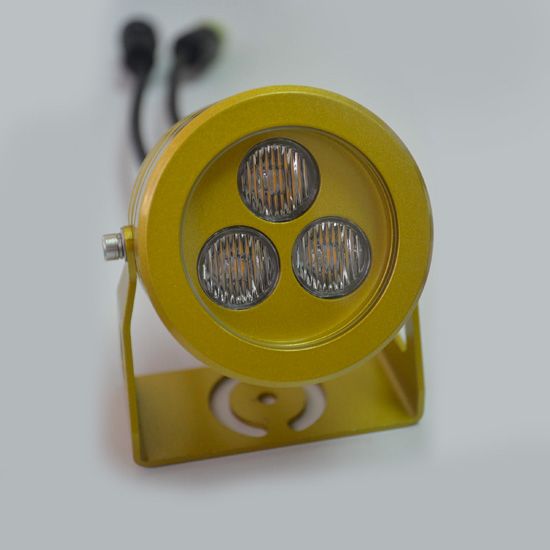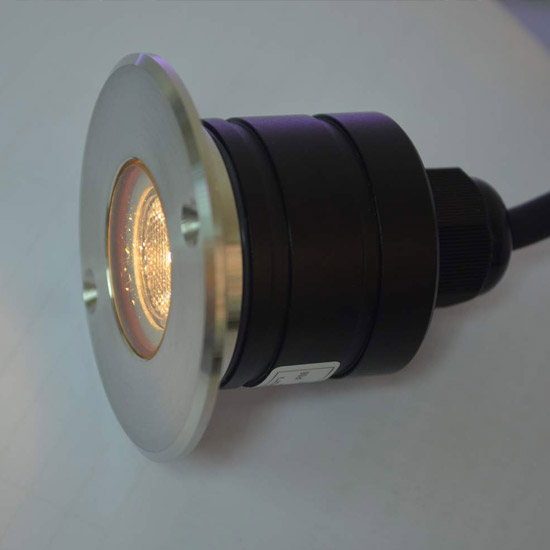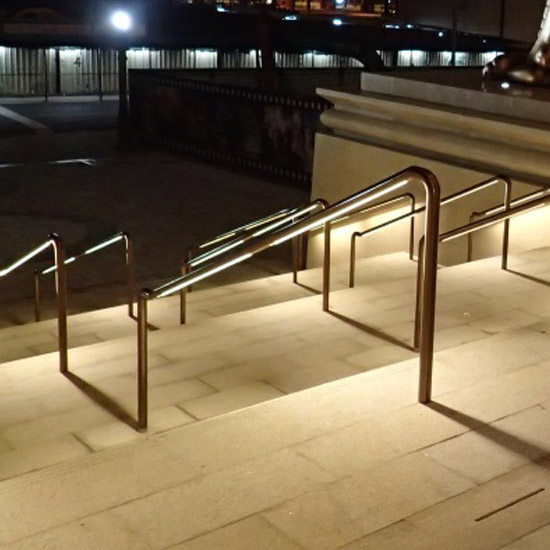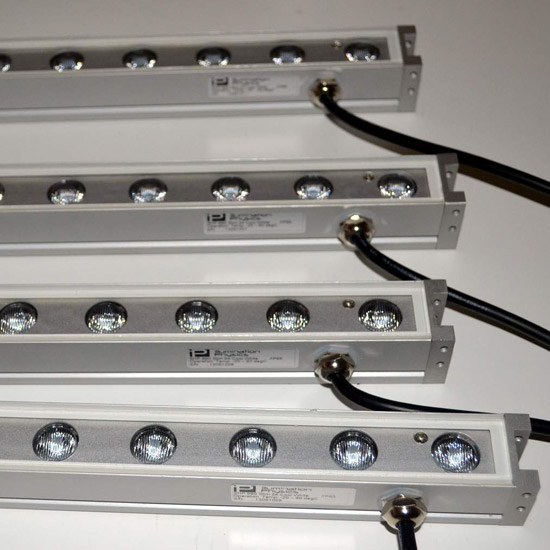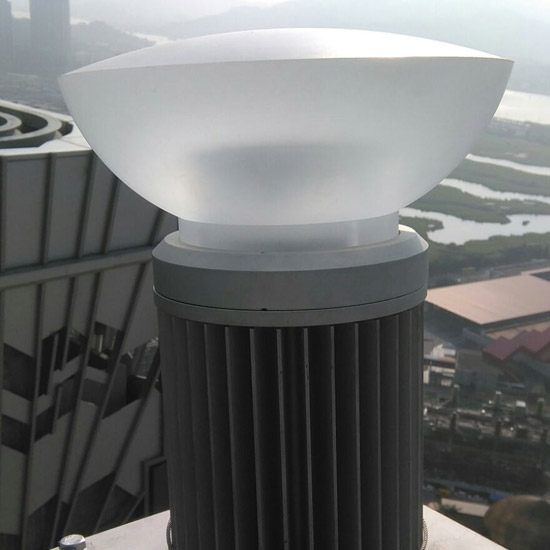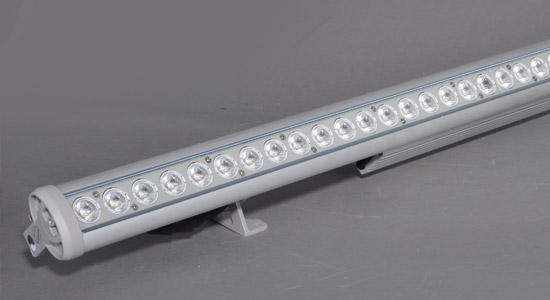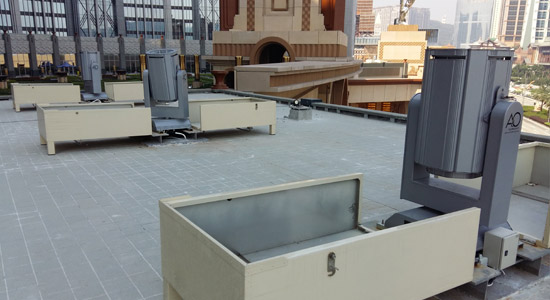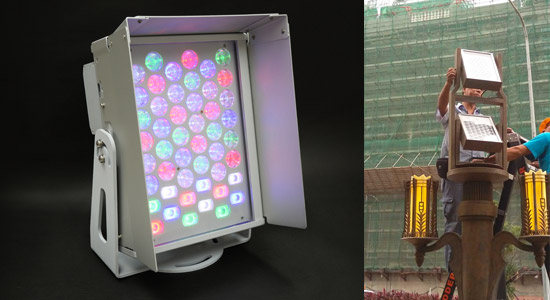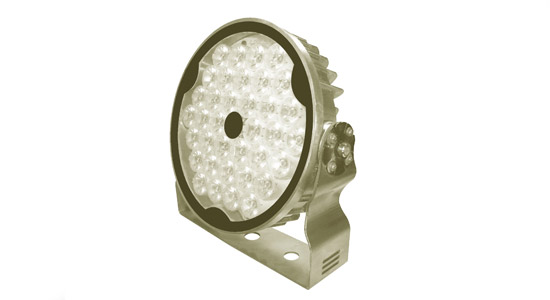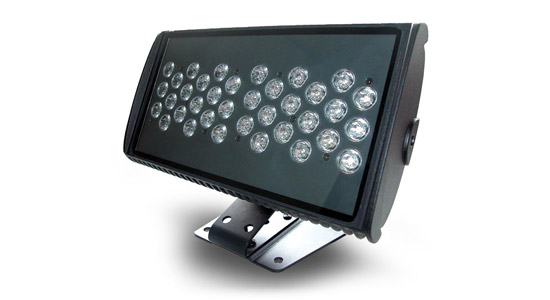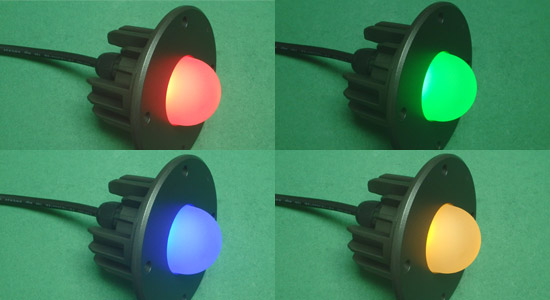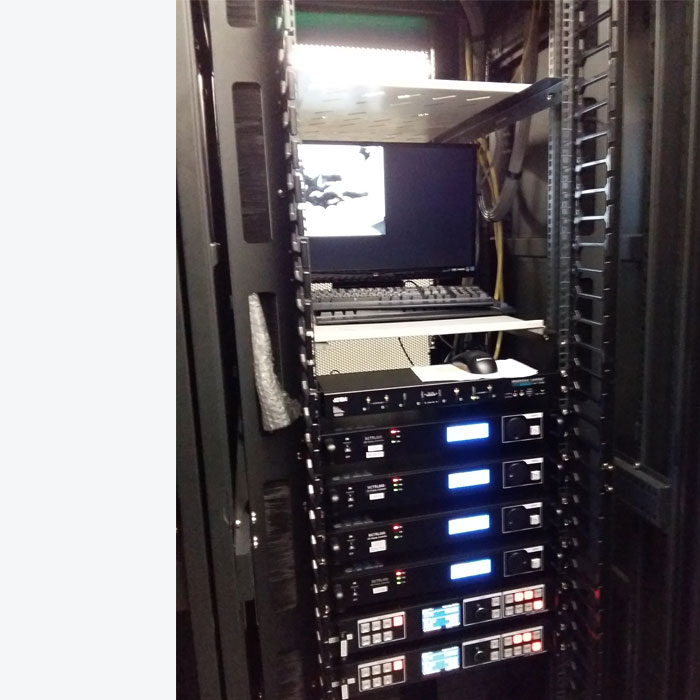The
illumination
of Studio
City Macau
Hollywood in Macau

Studio City Macau is an outstanding Hollywood-themed resort which offers what is an unprecedented cinematic inspired entertainment and leisure experience never before seen on the Cotai Strip in Macau. This is the second property to be owned by Melco-Crown Entertainment after City of Dreams and was awarded Casino/Integrated Resort of the Year by the 9th International Gaming Awards (IGA) for 2016.
Different people see different things when they first encounter Studio City at night. There is a common reaction however, one is forced to stop and consider the confronting view for several moments.
What follows is a chorus of typical comments;
‘That is impressive’,
‘That is amazing’
(whilst wondering at the style of the architecture) or just plain
‘Wow!’
One can be too analytical and try to allocate some part of your prior experience to the design of Studio City, after all there are many design clues…
Art Deco?
The epic banner branding of the great Hollywood movie productions?
Gotham City? After all Batman actually does await you in 4D once you are inside.
DESIGN-BUILD
Above and below the Golden Reel there are ‘Starbursts’; metal fingers radiating both up and downwards in two giant fans which are illuminated with the illumination Physics Wash 36 RGBA. Attention to detail demanded that the fixtures are finished in metallic gold to match the structure of the Golden Reel.
At the very summit of the building ten shards of steel stretch skyward like the fingers of a hand. To celebrate this architectural gesture demanded that we highlighted them and they are now a nightly feature. Wash lighting alone would not get the separation and contrast we wanted and would have resulted in a great deal of light spill into the sky. Instead we produced just ten pieces of a very special direct view custom fixture – the IP Super Dot, one of which was placed on the very end of each finger of the starburst. The 150 watt Super Dot was designed with a lens shaped like a mushroom. The PMMA lens has an internal reflector to direct 100% of the light downwards and in 360 degrees. Visible from any viewpoint without any upward light trespass, the Super Dot is intensely bright and used RGBA to match all of the fixtures on the hotel towers.
illumination Physics was chosen as the designer for all of the façade lighting based on our extensive experience of illuminating large buildings. We have a strong track record in innovative integrated façade lighting and always succeed in providing spectacular and reliable lighting treatments. illumination Physics has from our inception specialised in lighting which contained a secondary entertainment or media role. Our design build project for HSBC’s headquarters in Hong Kong is another such project and was completed in early 2015.
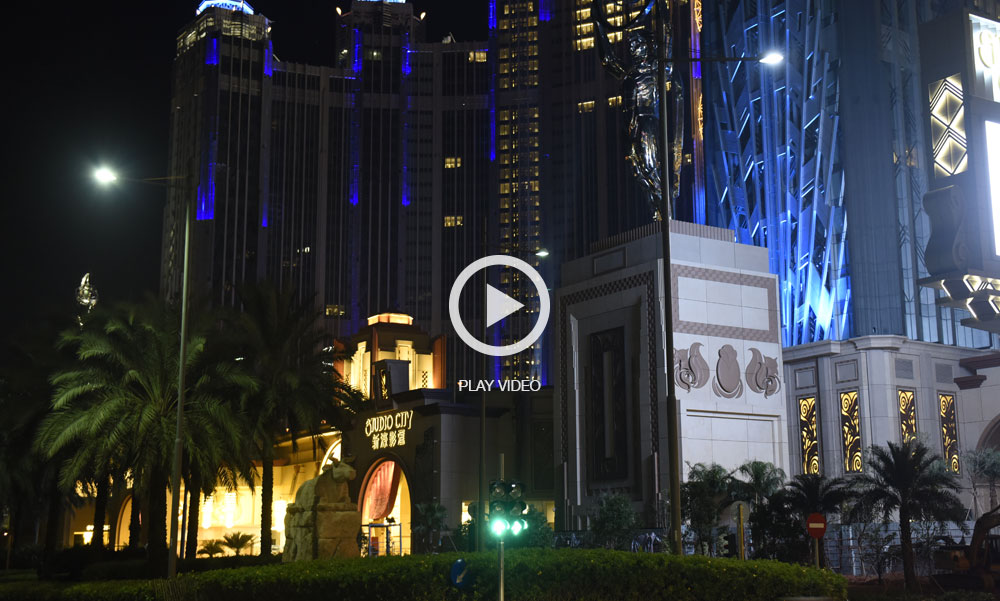
The lighting of Studio City carries part of the property’s marketing message in which the themed identity is vital. The lighting must also help the property exert a strong pull; it must promote drama and curiosity at first sight and then create a grand sense of arrival. In the words of Lawrence Ho (CEO and Chairman of Melco International), the objective was not to be the largest property on the Cotai Strip, but ‘the coolest’.
Yet it must do all this in a more sophisticated way than its many competitors in Macau. The design strikes a balance between grand spectacle and relative restraint in the programming of the dynamic lighting. The ‘show’ is provided by the towers whilst the podium only uses dynamic lighting for six powerful searchlights.
OUR SOLUTION
Beyond the ‘show-biz’ of the tower lighting illumination Physics ensured that the podium lighting was both dramatic as well as functional.
The design of the building may harken to early 20th century themes but it was constructed using modern unitised and non-unitised construction techniques. At night the stark textures are exploited to create drama and highlight areas such as the Bussing Grove (where the majority of guests arrive), so that they are consistent with the character of the more deliberately decorative features of the property.
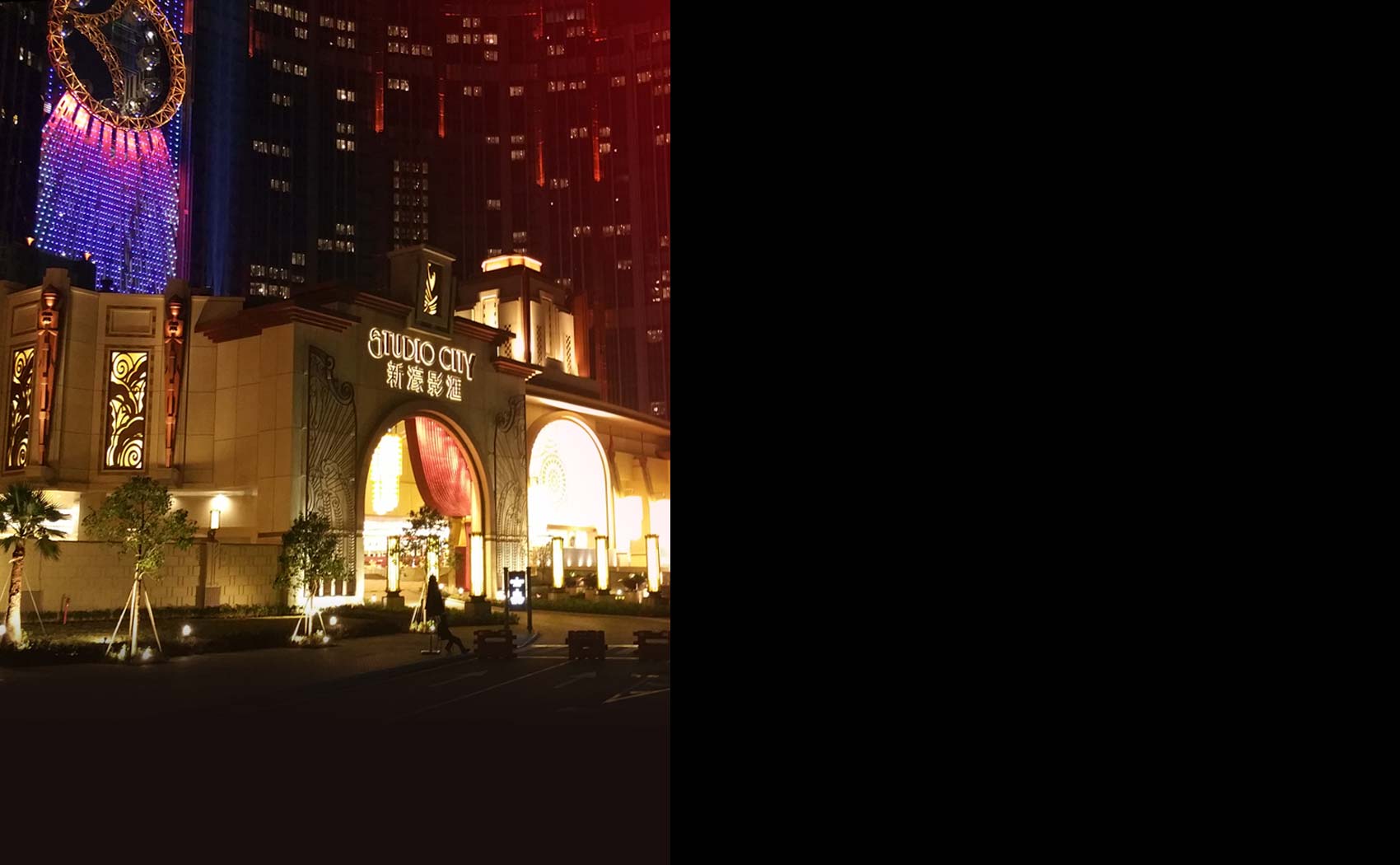
The solution came in the form of...
a unique optical design that concentrates the native 120 degree symmetrical beam of the SMD LED into a highly functional 15 x 60 degree focus.
How we do that is classified! The net result for the client was that we halved the cost of 1500 pieces of linear back-lighting without sacrificing functionality or quality.
More than half the potential energy was also saved.
Illumination Physics LPSL is a practical design solution to a common issue.
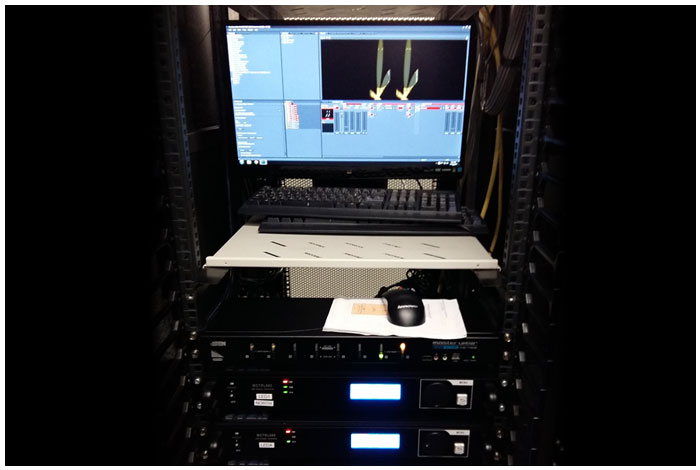
PRODUCTS
- 3008 x 8W Dot RGBA
- 300 x CL180 WW
- 972 x CR80 VWW
- 1 x CueCore playback controller
- 254 x DMX RDM Driver Dimmer 48 24V
- 30 x INSS26 Uplight WW
- 540 x INSS56 VWW
- 633 x LED Strip & Ribbon
- 8 x Linear Vario 180 NW
- 51 x Linear Vario 180 WW
- 92 x Linear Vario 990 VWW
- 37 x Linear Wash 1000mm WW AC
- 30 x Linear Wash 500mm WW AC
- 448 x Linear Wash Rebel 1000mm RGBA AC
- 48 x Linear Wash Rebel 1000mm WW
- 256 x Linear Wash Rebel 500mm RGBA AC
- 26 x LPSL Linear LED Strip 12W White (0.5 m)
- 1473 x LPSL Linear LED Strip 12W White (1.0 m)
- 46 x Rebel Drum 12 WW
- 37 x Rebel Drum 18 WW
- 16 x Rebel Drum 36 NW
- 60 x Rebel Drum 36 WW
- 6 x Search light 7K Falcon Beam White
- 110 x SHPT 24 LED White 990 WW
- 10 x Super Dots RGBA
- 48 x Wash 36 AC Rebel NW
- 166 x Wash 36 AC Rebel RGBA
- 228 x Wash 36 AC Rebel WW
- 6 x Wash 48 NW SUPERSPOT
- 280 x Wash 48 RGBA
- 68 x Wash 48 VWW/NW
- 14 x XHP180
Control
- 2 x Pandora Box Player Pro
- 1 x Clarity 4096 Channel Dongle
- 1 x Pandora Box Server
- 1 x Clarity Server
- 1 x Watchguard XTM33 Firewall Platform (& tray)
- 1 x X/Key USB Rack Swith
- 10 x Pathport Quattro
- 4 x Pathport Octo
- 8 x DD6 Data Splitters
